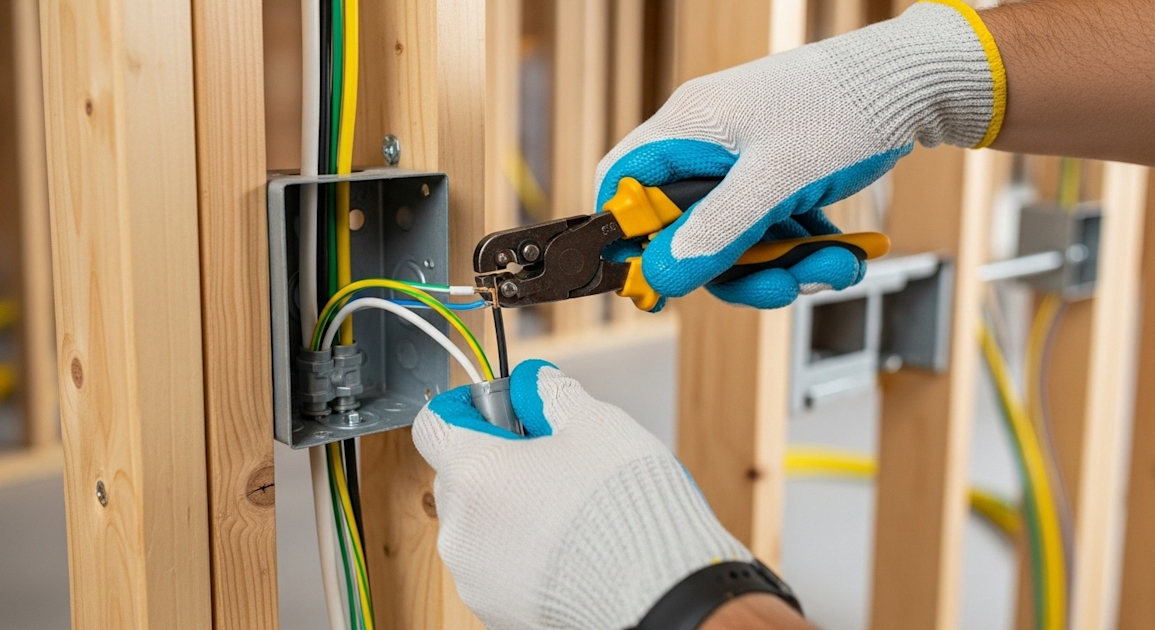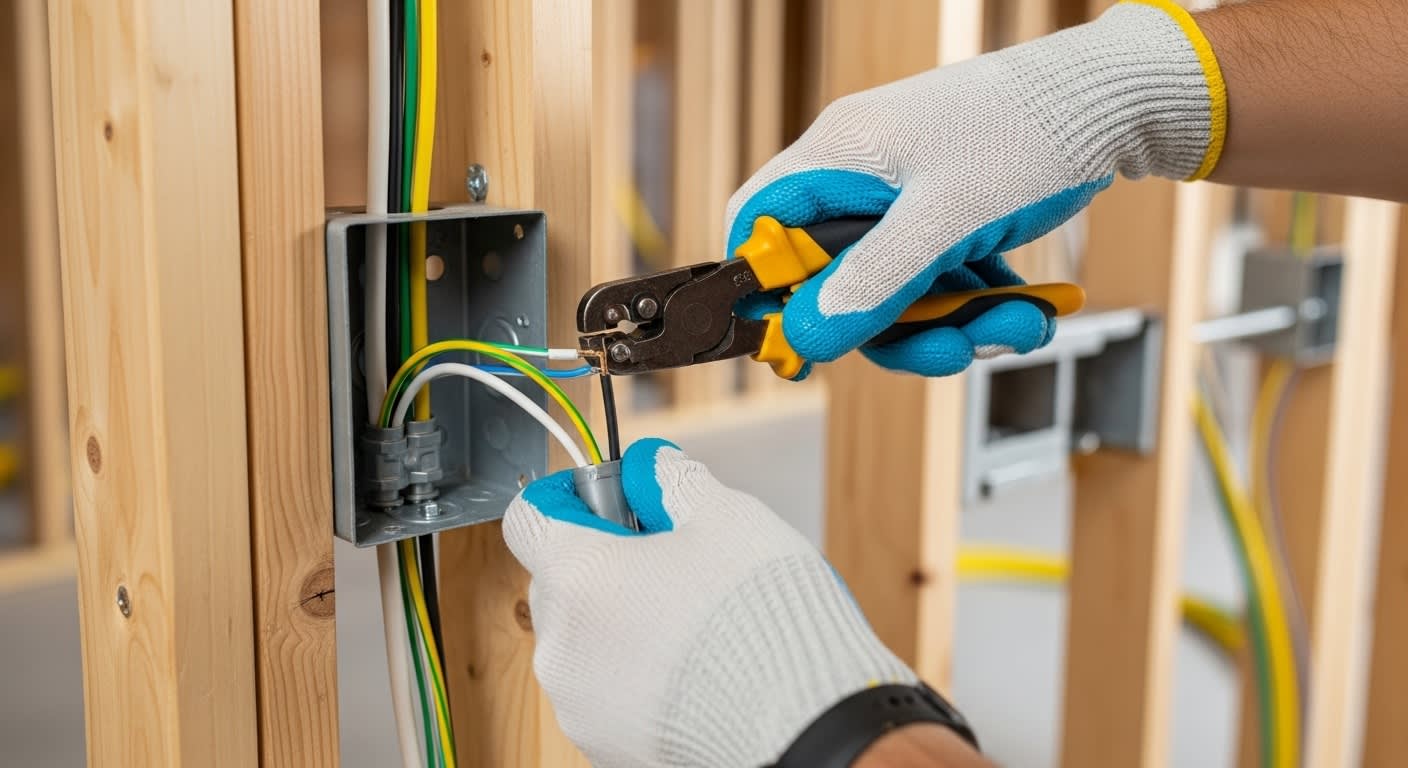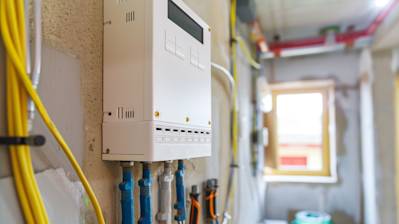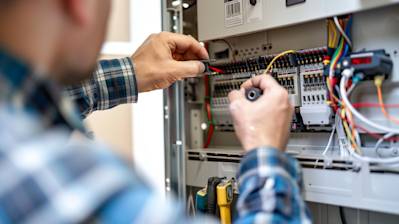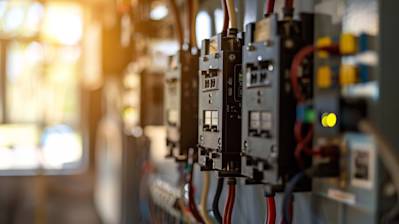One of the basic skills an electrician or DIY enthusiast should master is knowing how to splice wires effectively. This process involves connecting two or more wires together, allowing the seamless transmission of electrical current. While splicing wires may seem a straightforward endeavor, doing it wrongly may lead to short circuits, device failure, or fire hazards. This guide will provide a comprehensive understanding of how to splice wires, ensuring safety and efficiency at all times.
Basics of Wire Splicing
Before we delve into the core of the process, it's essential to understand the basics of wire splicing. This includes understanding the types of wires you might encounter and the different reasons you might need to splice wires.
Types of Wires
- Stranded Wires: Made up of several thin strands twisted together, offering flexibility and strength.
- Solid Wires: Composed of a single solid wire that’s less flexible but easy to insert into terminals.
Reasons to Splice Wires
- To connect wires in an electrical box.
- To add new devices or equipment to an existing circuit.
- To extend a wire that is too short.
Tools Needed for Wire Splicing
You wouldn't need much to splice wires, mainly:
- Wire Strippers
- Pliers
- Wire Connectors
- Electrical Tape
The Step-by-Step Guide to Splicing Wires
Now, we will delve into the actual steps involved in splicing wires. For the best results, ensure to take your time and don’t rush the process.
Step 1: Preparation
Switch off the power at your home's circuit breaker or fuse box to avoid any risk of electric shock before you start working on your wires. As you do this, remember, safety always comes first.
Step 2: Strip the Wire Insulation
With your wire strippers, strip about an inch of insulation off the ends of each wire you want to splice. Be careful not to cut any strands if you are dealing with stranded wires.
Step 3: Twist the Wires
Neatly align the stripped wire ends together and twist them clockwise using your pliers.
Step 4: Apply the Wire Connector
Place a wire connector onto the twisted wire ends. Twist it clockwise until it's firmly in place. The wires should be tightly secured within the cap of the wire connector, with no bare copper showing underneath.
Step 5: Secure with Electrical Tape
Wrap electrical tape around the base of the wire connector, extending downwards onto the insulation of the wires for additional security.
Step 6: Check Your Work
Examine the spliced wires to be sure the connection is secure, and the bare wires are not exposed. If they are, remove the connector, adjust the wires, and repeat the process from step 3.
Step 7: Power On
Once your connection passes your visual checks, you can now power on your circuit breaker or fuse box to test your connection.
Tips for Effective Wire Splicing
- Always cut the power supply when working on electrical wires.
- Make sure your wire stripper matches the gauge size of your wire for effective stripping.
- Never use a connector that’s too big for the wires you’re using.
- Always double-check your connections before powering on.
Frequently Asked Questions about How To Splice Wires
What Types Of Wires Can Be Spliced?
You can splice almost any type of wire, including copper, aluminum, and steel. However, different types of wires require different preparations before splicing, so it's crucial to know the kind of wire you're dealing with before you begin.
What are the Basic Tools Needed for Wire Splicing?
Basic tools you might need for wire splicing include wire cutters, wire strippers, pliers, a soldering iron (for soldered splices), heat shrink tubes or electrical tape (for insulating the splice), and wire connectors.
What is the Importance of Stripping Wires Before Splicing?
Stripping wires before splicing is crucial as it enables the conductive part of the wire to come into contact with other wires. Wire stripping removes the insulating cover that prevents electrical current from passing.
How Do I Strip Wires?
To strip wires, you'll need a wire stripper that matches your wire gauge. Simply place the wire in the appropriate slot in the stripper, then squeeze the handles and pull to remove the insulation.
Can I Splice Wires Without Solder?
Yes, you can splice wires without solder. One of the most common methods is using a twist-on wire connector, often known as a wire nut. This involves stripping the wires, twisting them together, and then screwing the wire nut onto the end for secure and insulated connection.
How do you Splice Wires With a Solder?
For those looking to create a more permanent splice, soldering might be the way to go. After stripping and twisting the wires together, you apply hot solder to the connection. This creates a strong bond between the wire strands. Finally, you would cover the soldered connection with a heat shrink or electrical tape for insulation.
Is Spliced Wire Safe?
Generally, a properly spliced wire is safe. However, it's important to remember that any electrical work can present safety hazards if not done correctly. Always ensure the power is off before working with wires and be sure to properly insulate any splices.
Are all Wire Connectors the Same?
Not all wire connectors are the same. There are different types of wire connectors available for different types of splices. For instance, there are twist-on connectors, push-in connectors, crimp-on connectors, among others.
Can Different Gauge Wires Be Spliced Together?
Yes, different gauge wires can be spliced together. However, you need to use a wire connector that is designed to hold different gauge wires together.
What is the Ideal Place to Splice Wires?
Generally, wire splices should be done in an easily accessible location. This is because wire splices may need regular inspections to ensure they remain safe and effective. Avoid splicing wires behind walls or in other hard-to-reach areas.
Can I Splice Wires Without Cutting Them?
Yes, with the use of tap splice connectors also known as quick-splice or T-tap, you can splice into a wire without cutting it.
Pros of Splicing Wires
Broad applicability
Splicing wires is a simple technique that can be applied in numerous electrical scenarios. Electricians use it routinely to join wires, but homeowners also find it helpful for various DIY projects. Splicing is a crucial skill in electronics, automotive repairs, appliances repairs, and even in robotics.
Easy to learn and execute
Splicing wires requires relatively simple steps and an easy-to-learn skill set. With the right tools and guidelines, anyone can splice a wire within minutes. This makes it very advantageous, especially for people who like getting hands-on and tackling small repairs on their own.
Cost effective
Knowing how to splice wires can save you a good deal of money in the long run. It gives you the ability to repair minor electrical faults on your own, without the help of a professional electrician. Instead of spending money on new wiring systems, you can simply splice the wires and have everything back in order.
Reduces waste
Splicing wires often involves combining two or more short wires to make a longer one. This is especially useful in scenarios where you only have small segments of wire but need a longer one. By splicing, you could reuse wires and thereby reduce waste.
Emergencies
In situations of emergency, where professional help can't arrive on time, knowledge of how to splice wires can be lifesaving. It can allow for the reestablishment of essential electricity circuits, temporarily restoring power or linking up a vital device.
Cons of Splicing Wires
Potential Safety Risks
Incorrectly spliced wires pose a threat to safety. A bad splice can result in a short circuit, which can potentially lead to an electrical fire. Additionally, there's a risk of electrical shocks if live wires are handled improperly when splicing. Thus, splicing wires requires caution, and anyone attempting to do so should be aware of the risks involved.
Quality of the connection
Even though splicing can result in a functional connection, it's worth noting that a spliced wire might not provide the same quality of connection as a new single wire. A poorly made splice can have a lower rating or capacity than the original wire, leading to inefficiencies or even failure in some cases.
Difficult in cramped or confined spaces
Splicing wires can become challenging if you're working in tight or confined spaces. Extra care must be taken to avoid cutting or damaging wires, and these cramped conditions can make that more difficult. Furthermore, there may not be enough room to apply the necessary tools or run new wires through if splicing isn't an option.
Efficiency depends on Skill Level
While splicing wires is relatively easy and straightforward, the overall proficiency and quality highly depend on your level of skill. If the steps are not correctly followed, badly spliced wires may lead to intermittent connections or failure over time.
Short-term Solution
In many cases, splicing is only a short-term fix. It might be enough to get an electrical system back up and running temporarily, but a more permanent solution would involve a new wire. Therefore, repeated splicing may be required if the issue keeps reoccurring, leading to more time and effort, and potentially more cost in the long run.
Myths and Misconceptions about Wire Splicing
Much like any other field, electrical work includes a vast array of myths and misconceptions. This is particularly true in the realm of wire splicing. As wiring tasks are core aspects of virtually all electronic devices and systems, it is crucial that professionals and hobbyists alike discern fact from fiction.
Myth 1: All Wires Are the Same
Misconception: Gauge doesn’t make a difference
This is a harmful oversimplification. Wire gauge refers to the thickness of the wire, and it absolutely impacts the capabilities of the wire. A lower gauge indicates a thicker wire, which consequently can handle a larger electrical load. If you wire a heavy-load appliance with a wire too thin (higher gauge), it can overheat and potentially cause severe damage.
Myth 2: The Color of Wires
Misconception: Wire color is just a design choice
Wire color is not just for aesthetic purposes. Quite the contrary, the colors of wires are often purposefully chosen to indicate different roles within a circuit. Although the color-coding may vary depending upon where you are in the world, in the U.S., black typically is hot, white is neutral, and green or bare wires denote grounding. Be sure to follow the color code in your specific region to prevent electrical mishaps.
Myth 3: Twist-on wire connectors are safer than other methods
Misconception: Twist-on Wire Connectors Always Guarantee Safety
Twist-on wire connectors, commonly known as wire nuts, have long been the standard in the electrical industry for connecting wires. However, the belief that they are categorically the safest method to splice wires is a misconception. While these connectors are convenient and useful for many applications, they are not foolproof. Cross-threading, overtightening, and under tightening can cause loose connections, leading to potential shorts, overheating, and increased fire risk.
Myth 4: Soldering is always the best way to splice wires
Misconception: Always Solder Wires For a Strong Splice
Soldering wires together does indeed create a reliable and permanent connection. However, the assertion that soldering is always the best method is simply not accurate. In an automotive, for instance, where there's a lot of vibration, a soldered connection can become brittle and break over time. Also, soldering requires heat, which can be a fire risk or can damage sensitive electronics. It is best used when the connection needs to be permanent and in a stable environment. In some cases, other methods like crimping or wire nuts might be more suitable.
Myth 5: Electrical tape can permanently secure a splice
Misconception: Electrical Tape is a Permanent Solution
Electrical tape, particularly the vinyl type, is an excellent insulator. However, while it is useful in emergencies or for temporary solutions, it is not designed to last indefinitely. Over time, environmental factors like humidity, heat, cold, or pressure can cause the adhesive to break down and the tape to peel away. Also, rodents or pests can chew through it. For a long-lasting, safe wire splice, pair an appropriate connector with heat shrink tubing or another durable insulator.
Despite the myths and misconceptions that surround it, wire splicing is a straightforward and critical procedure in electrical work. Remember to always prioritize safety over shortcuts or hearsay. Understanding these misconceptions can make your wire splicing more effective and safe!
Summary
Wrapping up, getting a hang of how to splice wires can come in handy during various DIY projects or standard home improvement tasks. The process might seem daunting at first, but with a bit of practice, it gets simpler. Always remember to take safety precautions when handling wires, as failure to do so can lead to electrical shocks or even fires.
Having the knowledge of how to splice wires is an excellent skill, and it ensures that you can tackle minor electrical repairs yourself. This will not only save you money but also empower you with the confidence of being capable of handling such tasks. It might take a few tries to get it right initially, but with patience, you'll acquire proficiency.
Overall, learning how to splice wires is a valuable DIY skill to have in your repertoire, and it will serve you well in many instances. The key is consistent and cautious practice. If you approach the task with safety in mind, respect for the power of electricity, and little patience, you will soon find that it is not as complex as it seems. Just take your time and remember that with every botched wire splice, you're one step closer to mastering it.
About Sagan Electric
Sagan Electric, located in the heart of Sacramento, CA, is your go-to electrical service provider. With a solid reputation for reliability, expertise and efficiency, we've been lighting up homes and offices in the area with top-quality electrical solutions for over a decade. Our team of skilled electricians, each with years of experience under their belts, use state-of-the-art tools and techniques for safe and seamless electrical installations, repairs and maintenance services. At Sagan Electric, we take pride in powering our community and are committed to keep your lights on, your power running, and your electric worries sorted.
Tags: splice wires, electrical repair, DIY,

